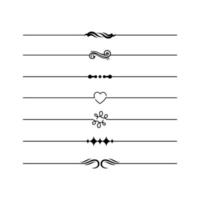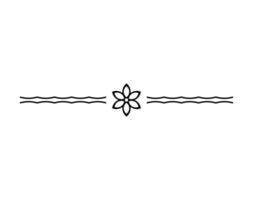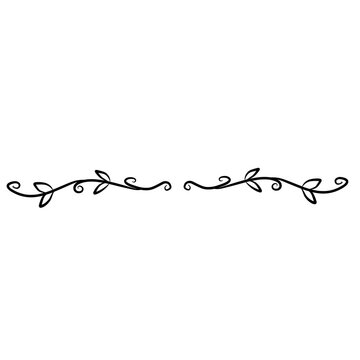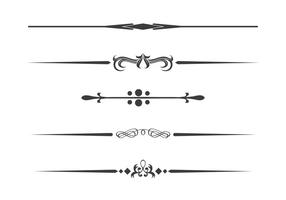Have you ever found yourself scrolling through a long article and feeling overwhelmed by the wall of text? This is where decorative page breaks come into play. As an avid content creator and designer, I’ve often relied on decorative page breaks to enhance visual appeal, improve readability, and keep my audience engaged. In this comprehensive guide, we will explore the various aspects of decorative page breaks, including their benefits, design ideas, and implementation strategies.
What is a Decorative Page Break?
A decorative page break is a visual element used in digital content to separate sections or ideas. Unlike traditional page breaks that simply add whitespace, decorative page breaks incorporate designs, patterns, or images that align with the content’s theme or purpose. They not only break the monotony of text but also serve as a visual cue to guide readers through the content.
Why Use Decorative Page Breaks?
The importance of using decorative page breaks in your content cannot be overstated. Here are some compelling reasons:
1. Improve Readability
Long blocks of text can be daunting for readers. Decorative page breaks help to segment content, making it easier to digest. By dividing your content into bite-sized sections, you can enhance the user experience significantly.
2. Enhance Aesthetic Appeal
Incorporating visually appealing breaks can elevate the overall design of your content. They provide an opportunity to showcase creativity and align with branding elements.
3. Maintain Reader Engagement
Readers are more likely to stay engaged when the content is visually stimulating. Decorative page breaks serve as a reminder for readers to pause, reflect, and anticipate the upcoming sections.
4. Create Functional Navigation
When strategically placed, decorative page breaks can guide readers through your content, offering a clear path from one section to the next. This can be particularly useful in longer articles or ebooks.
Types of Decorative Page Breaks
There are various types of decorative page breaks that you can incorporate into your content. Below, I share some of my favorites:
1. Image-Based Page Breaks
Using images or illustrations as page breaks can greatly enhance the visual experience. For instance, if you’re writing about nature, a floral or scenic image can serve as a delightful transition.
2. Patterned Dividers
Patterns can be subtle or bold, depending on your content theme. Use geometric shapes, lines, or dots in your design to create a unique divider that fits your brand.
3. Themed Icons
Icons can add a playful touch. For example, if you’re writing a cooking blog, use kitchen utensils as decorative page breaks between sections.
4. Creative Typography
Utilizing different fonts, sizes, or colors can also serve as decorative elements. A striking quote or phrase can act as a page break that resonates with readers.

How to Design Decorative Page Breaks
Designing effective decorative page breaks requires a blend of creativity and usability. Here are some tips based on my personal experiences:
1. Stay Consistent with Branding
Your page break design should reflect your overall brand aesthetic. Use consistent colors, fonts, and styles that align with your brand’s identity.
2. Consider Your Audience
Understanding your audience’s preferences helps in creating relevant and appealing breaks. What resonates with a corporate audience may differ from a lifestyle blog reader.

3. Balance Aesthetics and Functionality
Your decorative elements should enhance the content rather than distract from it. Keep the design simple and ensure it complements the surrounding text.
4. Use Online Design Tools
Utilize platforms like Canva or Adobe Spark to create custom page break designs. These tools offer various templates and design elements you can easily customize.

Implementing Decorative Page Breaks in Your Content
Once you’ve designed your decorative page breaks, it’s time to implement them effectively. Here are some strategies that have worked for me:
1. Break Up Long Sections
When writing long paragraphs or sections, insert a decorative page break every 300-500 words to segment the content and offer visual breaks.
2. Use in Between Key Ideas
Place decorative page breaks between critical ideas or concepts to emphasize transitions. This technique helps reinforce the structure of your content.

3. Enhance Call-to-Actions
Place decorative page breaks above or below CTAs to draw attention. They can accentuate elements such as sign-up forms, download links, or product showcases.
4. Experiment with Layouts
Try different placements and designs to see what resonates best with your audience. Don’t be afraid to switch things up based on feedback and analytics.

Comparative Analysis: Decorative Page Breaks vs. Traditional Page Breaks
Below is a comparative table that outlines the differences between decorative page breaks and traditional page breaks:
| Feature | Decorative Page Breaks | Traditional Page Breaks |
|---|---|---|
| Visual Appeal | High – Aesthetic and creative | Low – Functional only |
| Readability | Improves readability | Minimal effect |
| Engagement | Increases reader engagement | Does not impact engagement |
| Branding Opportunity | Strong branding potential | No branding opportunity |

Pros and Cons of Decorative Page Breaks
Pros
- Enhances visual content
- Improves content structure
- Increases reader retention
- Offers branding opportunities
- Encourages creativity
Cons
- Can overwhelm if overused
- May not suit all content types
- Requires additional design effort
Best Practices for Using Decorative Page Breaks
To maximize the effectiveness of decorative page breaks in your content, consider the following best practices:

1. Use Sparingly
While decorative page breaks can enhance your content, using them too frequently can overwhelm readers. Use them strategically to maintain balance.
2. Test Different Designs
Experiment with various designs and placements. A/B test to find out which options resonate best with your audience.
3. Gather Feedback
Solicit feedback from your audience about the use of decorative breaks. This can help you refine your designs and placement in future content.
4. Stay Trendy
Keep an eye on design trends and adjust your decorative page break styles accordingly. This can help keep your content fresh and engaging.
FAQs About Decorative Page Breaks
What is the purpose of decorative page breaks?
Decorative page breaks serve to enhance visual appeal, improve readability, and guide readers through the content. They help separate sections and maintain engagement.
How can I create a decorative page break?
You can create decorative page breaks using graphic design tools like Canva or Adobe Spark. Custom create designs that align with your content theme and branding.
Are decorative page breaks suitable for all types of content?
While decorative page breaks enhance many types of content, they may not suit more formal or technical documents. Always consider your audience and content type.
Can decorative page breaks improve SEO?
While decorative page breaks themselves do not directly impact SEO, improving user experience and engagement can lead to better site metrics, which can influence SEO rankings.
How do I know if my decorative page breaks are effective?
Monitor reader behavior through analytics. An increase in time spent on the page, lower bounce rates, and positive feedback can indicate that your decorative page breaks are effective.
Conclusion
Incorporating decorative page breaks into your content is a fantastic way to enhance both aesthetics and functionality. By improving readability, maintaining engagement, and showcasing creativity, these breaks can transform how your audience interacts with your content. Remember to experiment, test different approaches, and always prioritize your readers’ experience. Happy designing!